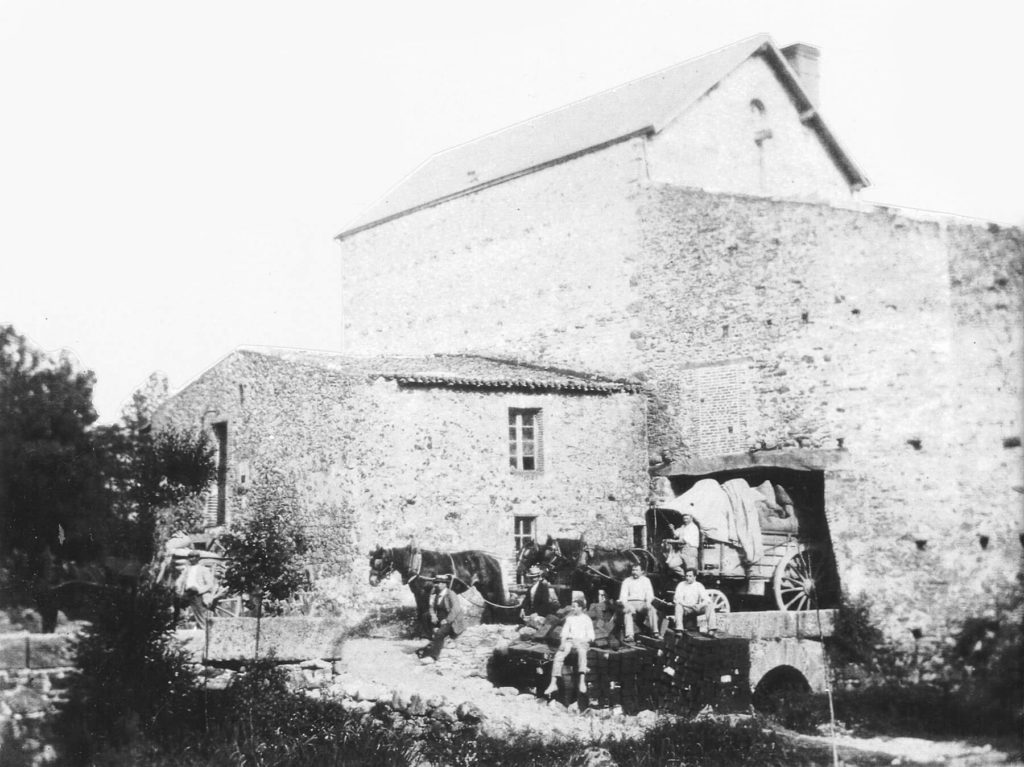
Minoterie Suire, a family history
History and strong family convictions have played a part in Minoterie Suire’s commitment to quality. Millers from father to son for over 250 years, the first of them, François Suire, ran a flour mill called “Le Moulin Rouge”. The miller was shot for his faith in 1794 at the age of 41, and his mill was burnt down by the Republicans. Completely demolished in 1846 by Louis and Théophile Suire, it was replaced by the Genêt mills before being moved to Montaigu in Vendée.
It was in the 1970s, after the Suire family and the Girardeau family met, that the story began to take shape. The Girardeau family had transitioned to responsible farming and bought the Montaigu mill in 1987. This mill had been pioneering organic flour production since 1979. The famille Girardeau transformed it into a magnificent professional flour mill with a flint millstone.
In 2004, Minoterie Suire mill was transferred to the Moulin du Feuillou (in Boussay), the Girardeau family’s historic and emblematic site on the banks of the River Sèvre, in an authentic rustic setting. For generations, millers here have practised their passion for their trade, based on ancestral expertise.
Our organic mill, more than a story…an ambition!
A pioneer and committed player in agriculture and food that respects the environment and people, the Minoterie Suire and its flint millstones produce flours of excellence with unrivalled taste and nutritional qualities. Customers, the environment and our children’s health are at the heart of our production concerns and the support we offer bakery professionals..
“We are committed to social and environmental eco-responsibility.”
Bertrand Girardeau
The story of the mills on the banks of the River Sèvre
The mills have played a natural part in the historical identity of the banks of the River Sèvre. The Minoterie Suire is part of this hydraulic heritage that has left its mark on our collective memory. Since the 11th century, 143 mills and industries have been in operation to produce flour (nearly half), paper, electricity, power for textile factories and fulling or tanning mills..

A location ideal for mills
The Nantes branch of the River Sèvre enters the wine-making area at Boussay, home to our Moulin de Boussay. The river, made up of deep valleys and a succession of rocks, has always made it easy to build and operate mills. As well as transporting goods and people, many other activities have taken place on the River Sèvre over the centuries, making it an ideal place to meet and trade. Not least because of its location, on the borders of Brittany, Poitou and Anjou.
The transformation of traditional mills
Si de nombreux moulins ont disparu avec les guerres de Vendée, les crues dévastatrices ou les destructions par les propriétaires eux-mêmes, certains ont été conservés et réhabilités. Parmi les moulins encore debout sur l’ensemble du territoire, une poignée d’irréductibles (une quinzaine), dont la Minoterie Suire fait partie, continuent de perpétuer la tradition de l’écrasement des grains sur meules de pierre de silex avec un sourcing expert de blés anciens
Although many mills disappeared during the Vendée Wars, or because of devastating floods or destruction by the owners themselves, some have been preserved and restored. Among the mills still standing throughout the region, a handful (around fifteen), including the Minoterie Suire, continue to perpetuate the tradition of crushing grain on flint millstones using expert sourcing of ancient wheats.
.

